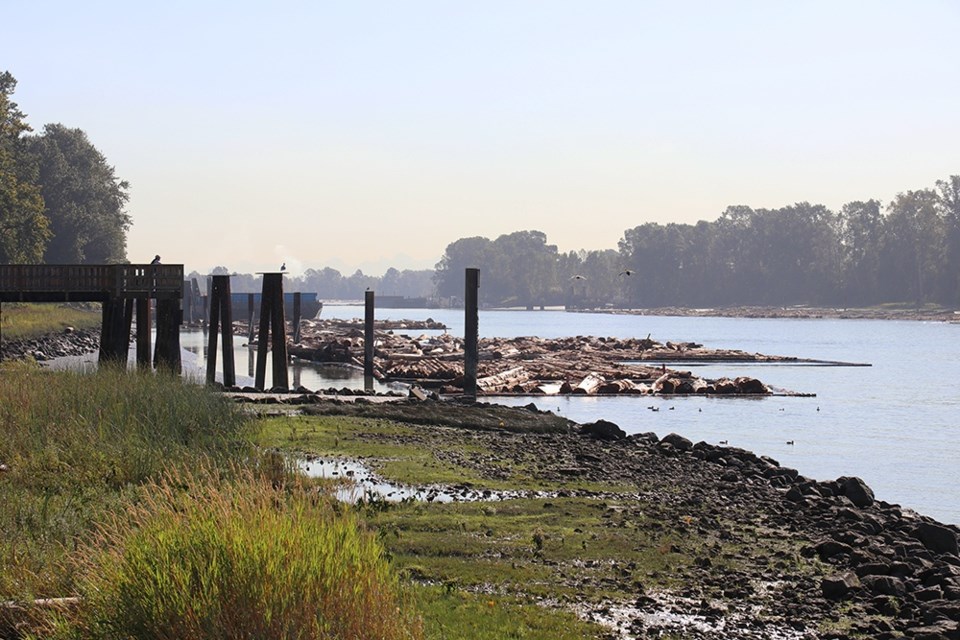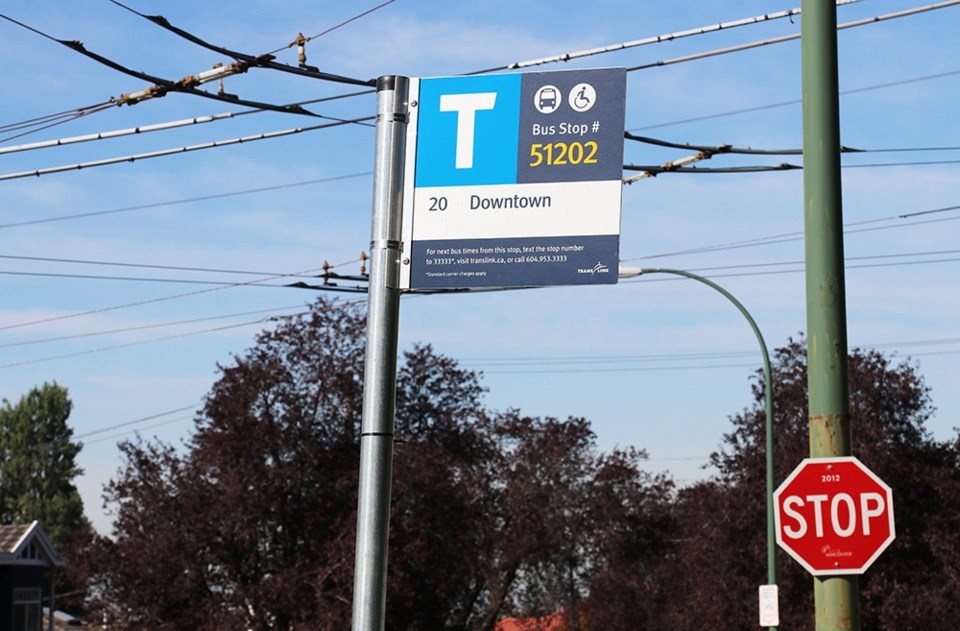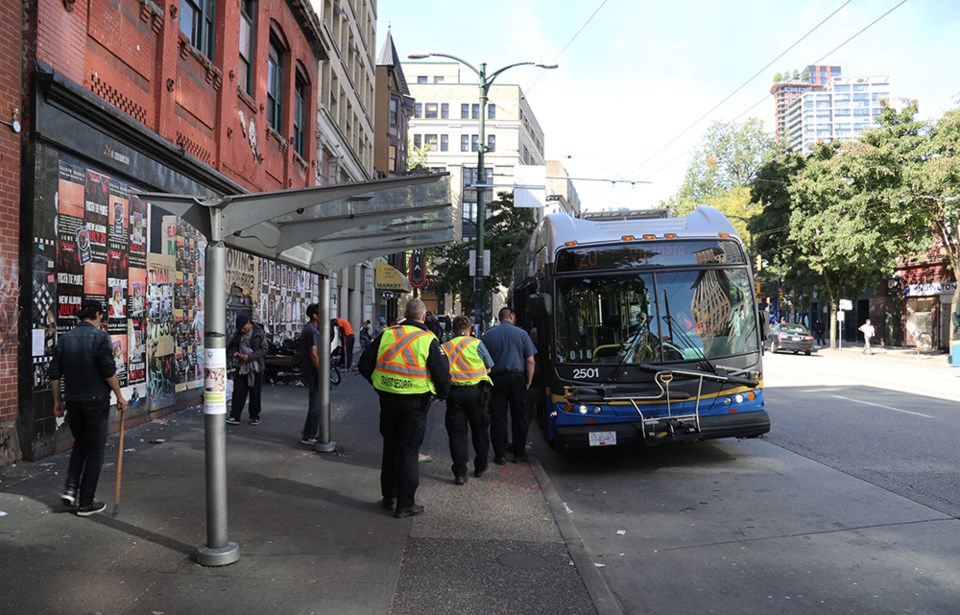It’s not often a woman sits down beside you on the bus and immediately starts talking about how good she is at blow jobs. But then, there aren’t many bus routes like the No. 20, and there aren’t many streets in Canada like East Hastings.
The woman in question – who doesn’t give me her name, despite our suddenly intimate conversation – says she’s going to ride a few blocks west because she’s not making enough cash in this part of town. Like several others, she ghosted onto the bus at the stop between Princess and Jackson.
She’s looking for enough cash to buy a cooler or a beer on this warm, sunny fall morning. “That way I can forget about hungry I am,” she adds, before asking if I have any change.
She exits near Main, as another dozen or so people ghost on board past her, finding a temporary escape from the streets.
Riding the No. 20 along the two-kilometre stretch between Campbell and Cambie in Vancouver is always a sobering journey; a first-hand glimpse of the ongoing tragedy known as the Downtown Eastside. It’s here that homelessness, drug addiction and mental illness are most concentrated in the city, and where the fentanyl crisis has hit hardest.
By contrast, after passing through the area, the bus route terminates with a short loop downtown amid some of the most expensive real estate in North America. The other terminus is in one of the sleepiest parts of the city, at its southern edge, just a few hundred metres from the Fraser River near Marine Drive.

In between is a spectrum of the city’s broad cultural and ethnic patchwork.
It’s like all of Vancouver life is on the No. 20, minus the super-rich who’d rather take the Lamborghini. You see tailored suits alongside secondhand rags; babies in expensive double strollers beside the elderly with walkers; and representatives of five continents (no penguins to make it six, sadly).
The southern section of the route takes in comparatively hidden areas of Vancouver that have yet to see much gentrification, apart from the elevated price of housing.
From its suburban terminus, the No. 20 heads due north up Victoria Drive – which could well rank as the city’s most ethnically diverse street – for almost five kilometres. The quantity and diversity of restaurants the bus passes are dizzying – from a variety of Chinese and Vietnamese to Filipino, Lebanese and Hungarian – while the bus itself turns into a mobile melting pot of ethnicities.
This skews a little more Caucasian as we transition onto Commercial Drive, which is not exactly a slouch on the diversity front either.
Then we turn onto Hastings and head west. An Irish docker on his way home from an early shift confirms that the route gets a bit rougher on Hastings. “I’ve seen a guy get aggressive with a woman who caught his eye, a ‘what are you looking at?’ kind of thing,” he says.
“It’s safe but it’s just pretty sad,” says a stroller-commandeering woman about the Downtown Eastside.
I step off the bus at Carrall and make my way through the busy sidewalks, past the ubiquitous patches of pavement where locals spread out clothes, books and day-to-day wares to sell what they can.
Up ahead, a few transit security staff are directing passengers at a bus stop that was temporarily closed last Tuesday for safety reasons: namely crowds on the sidewalk spilling into the path of the bus, resulting in several recent near misses.

There was local uproar over the closure, with advocates demanding the stop be reinstated to aid those with mobility issues.
It got me thinking: Is transit a privilege or a right? Driving is seen as a privilege, and, in these days of rapid densification in Metro Vancouver, it seems like transit is becoming the direct opposite; more of a need than an option.
The stop was reopened last Thursday.
“We have taken several steps to address safety concerns raised by our bus operators. This includes increased patrols in the area by transit security and transit supervisors, and instructing our buses to travel at reduced speeds near this stop,” Translink said in a statement.
“We believe these additional measures will allow us to continue service at the location in a safe way and will continue to closely monitor safety at this location once service is restored.”
Navigating this stretch of road has an obvious effect on those behind the wheel of the bus.
“It’s definitely the worst route. Ninety-nine per cent of bus drivers agree,” says a driver we speak to, sporting a grey beard and twinkling eyes. “You get the freeriders, the alcoholics, people bringing their food...” He throws his hands in disgust, but keeps smiling.
The smile could be a necessary façade. When I get back on for the final stretch into the downtown core, another driver tells me after four years of driving the Hastings routes — the 14, 16 and 20 — he had to take a “mental break” on quieter routes.
Stopping suddenly to avoid pedestrians, negotiating with non-paying customers and dealing with occasional threatening behaviour can take their toll, he says.
“Vancouver is the worst city in Canada for pedestrians not heeding traffic signs,” he says, adding that he has a duty to protect as many as 150 passengers that cram on board.
“I can’t stop on a dime. If someone walks out in front of me, I’m going to hit them.”
• Bus Lines is a twice-monthly series featuring stories from Vancouver’s most interesting bus routes.
Transit Talk: The No. 20
Terminus stations: Richards at Georgia, Harrison Loop
Length of route: 9.3 km
Estimated route time: 54 minutes
Average speed (2016): 13.4 km/h
Average paid daily boardings (2016): 23,100
Average unpaid daily boardings: ?
National cuisines available en route: 25 (at least)



